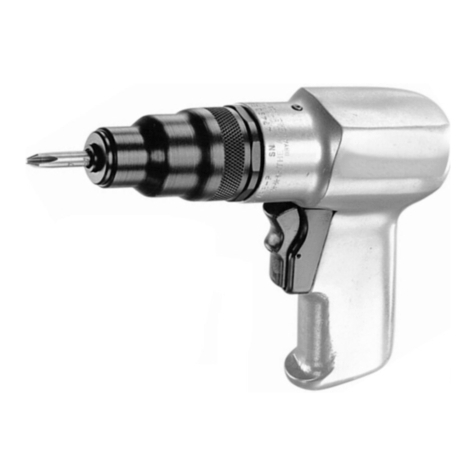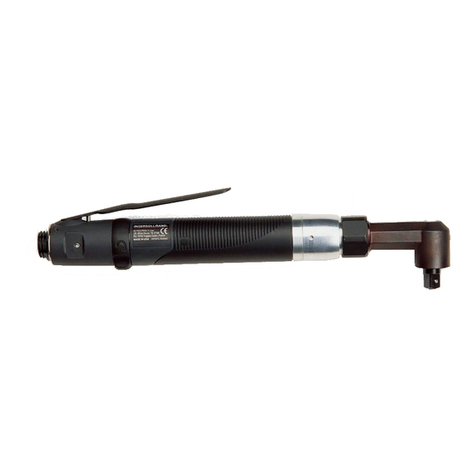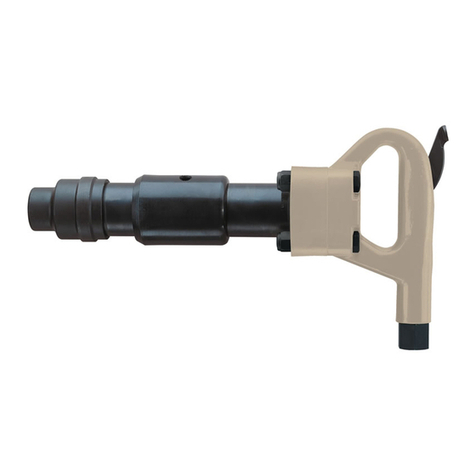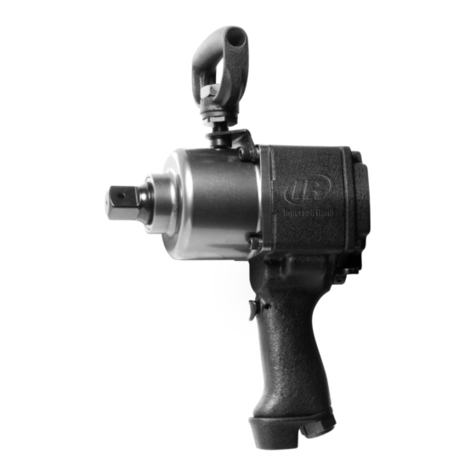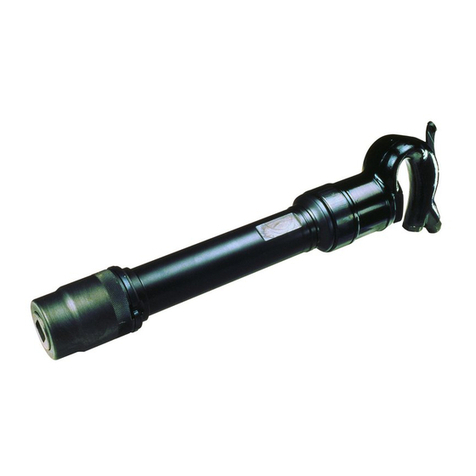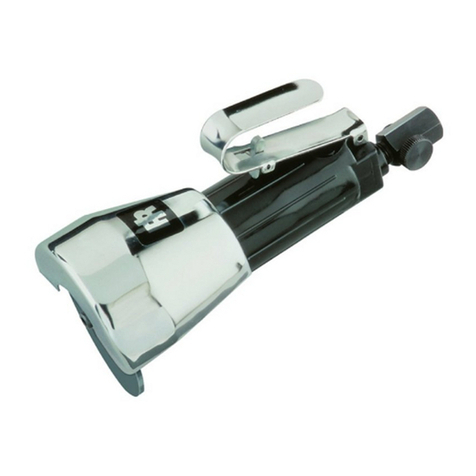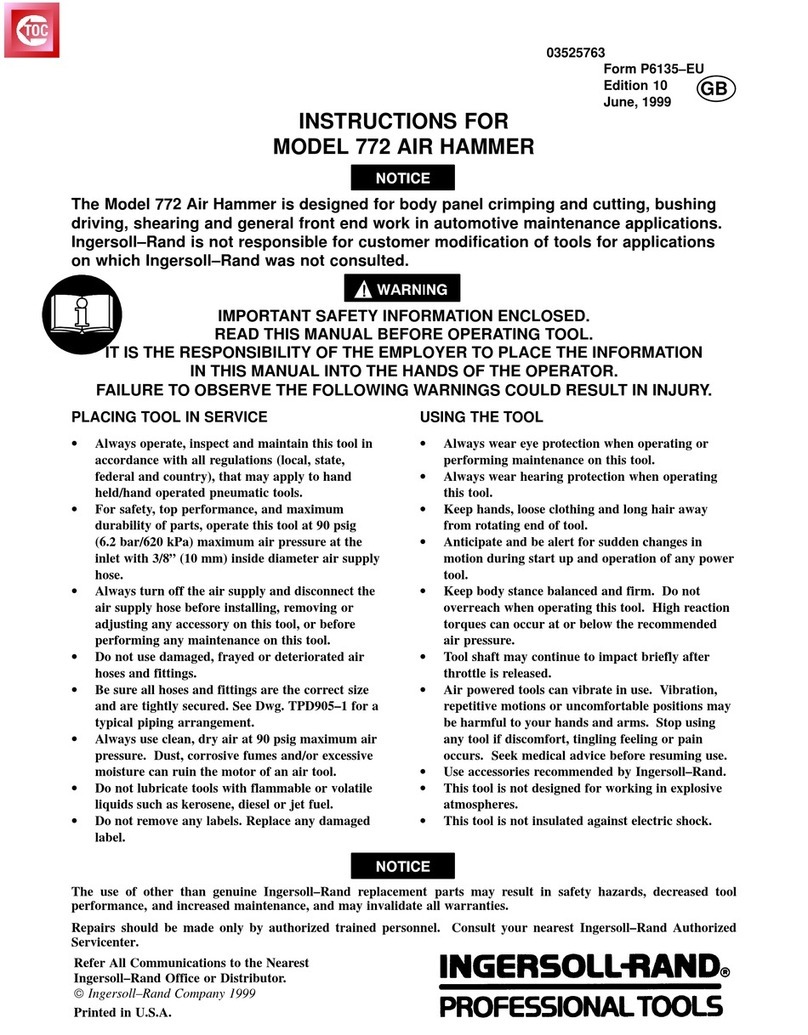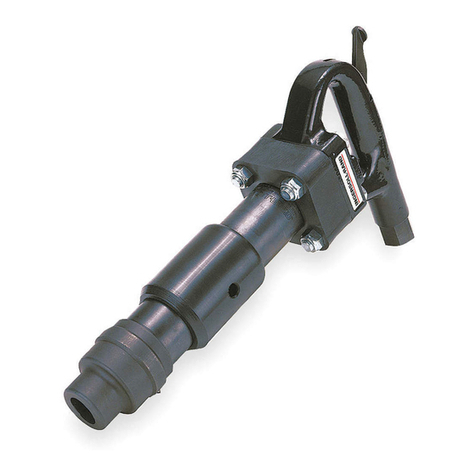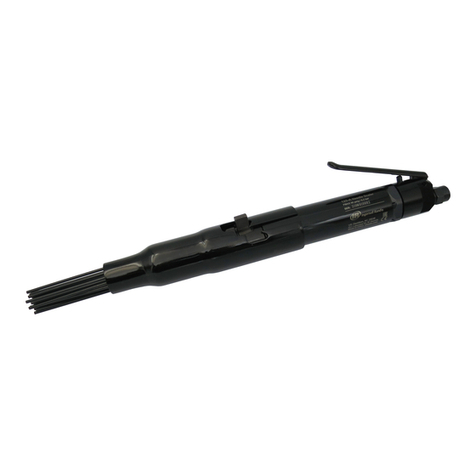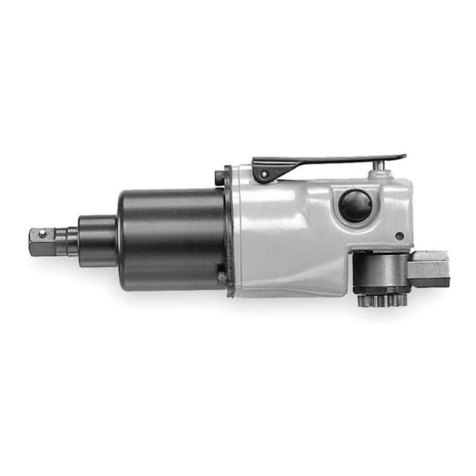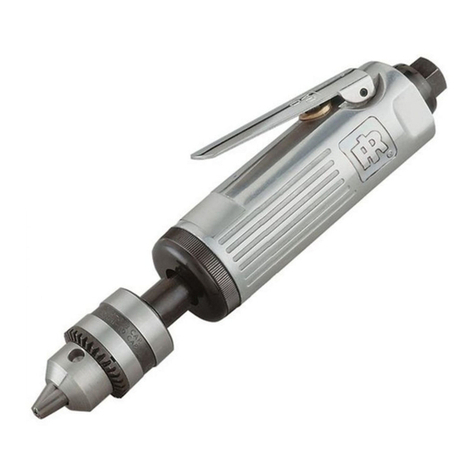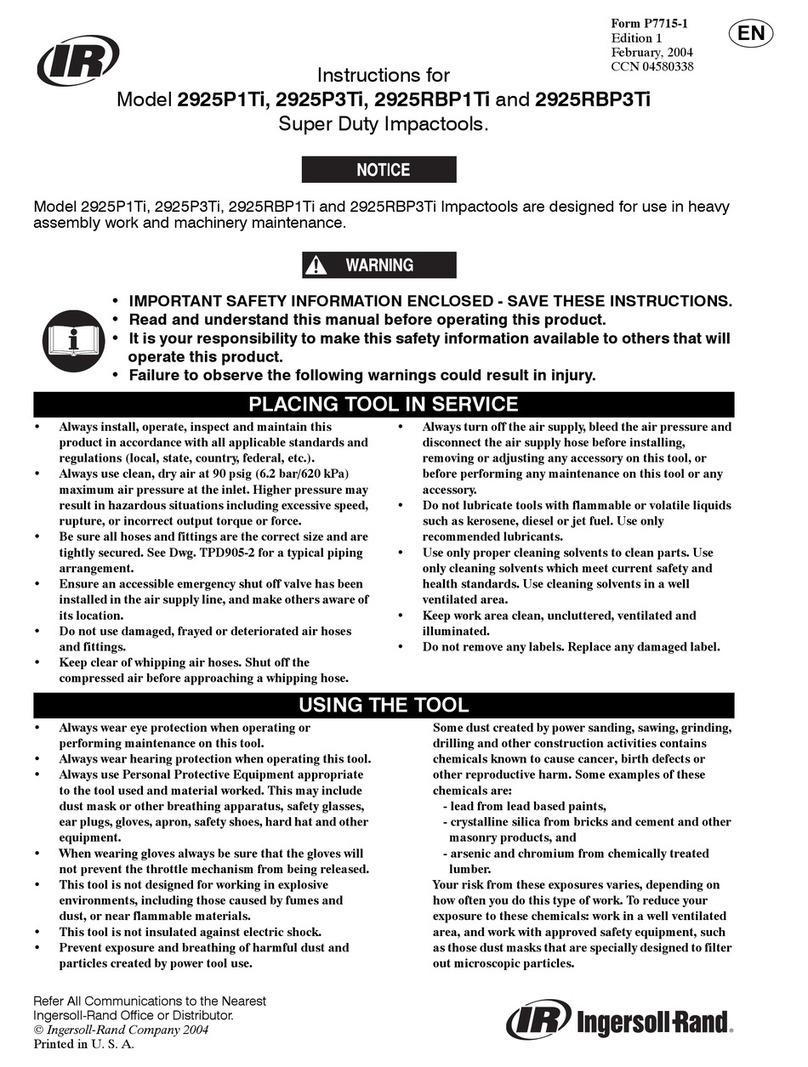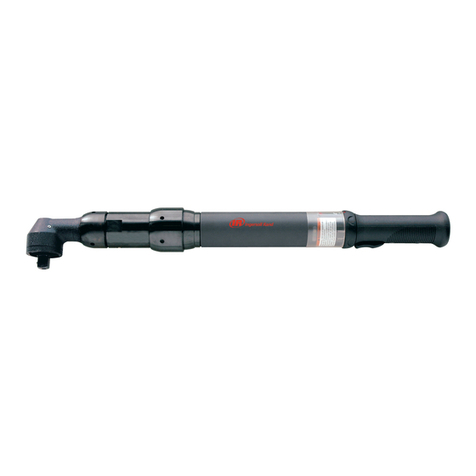
Product Safety Information
Failure to observe the following warnings, and to avoid these potentially hazardous situations, could result in death or serious
injury.
Read and understand this and all other supplied manuals before installing, operating, repairing, maintaining, changing accessories
on, or working near this product.
Always wear eye protection when operating or performing maintenance on this tool. The grade of protection required should be
assessed for each use and may include impact-resistant glasses with side shields, goggles, or a full face shield over those glasses.
Always turn o the air supply, bleed the air pressure and disconnect the air supply hose when not in use, before installing, removing
or adjusting any accessory on this tool, or before performing any maintenance on this tool or any accessory.
Note: When reading the instructions, refer to exploded diagrams in parts Information Manuals when applicable (see under Related Documentation
for form numbers).
Lubrication
•
•
•
•
Each time a “D”Series or MDT3-EU Hammer is disassembled for
maintenance and repair or replacement of parts, pour about 3 cc of
Ingersoll Rand No. 10 Oil in the air inlet and operate the tool for
5 seconds to coat the internal parts with oil.
Weekly, ush the Tool and lubricate immediately afterwards as
instructed in PLACING THE TOOL IN SERVICE.
Loss of power and excessive air consumption may be due to wear on
the Piston (16) and the bore of the Barrel (17). This can be determined
by checking the Piston diameter at each end and in the center with
a micrometer. If the diameter at the center is .003” greater than the
diameter at either end, it is proof that the Piston and Barrel are worn.
To correct, lap the Barrel and install an oversize Piston as instructed
below, under Installation of Oversize Piston.
Oversize Parts
The Piston (16), Nozzle (21) and Inlet Bushing (9) can be furnished
oversize as well as standard size. When properly installed, oversize
parts renew the eciency of the Hammer as well as lengthen its life.
See Installation of Oversize Piston on Page 3.
Disassembly
General Instructions
Do not disassemble the tool any further than necessary to replace
or repair damaged parts.
Whenever grasping a tool or part in a vise, always use leather-
covered or copper-covered vise jaws to protect the surface of
the part and help prevent distortion. This is particularly true of
threaded members and housings.
Do not remove any part which is a press t in or on a subassembly
unless the removal of that part is necessary for repairs or replace-
ment.
Do not disassemble the tools unless you have a complete set of
new gaskets and O-rings for replacement.
Disassembly of the Handle and Throttle Mechanism
Remove the Lock Spring (24A or 27) from the Retainer (24 or 28).
Using a vise with leather covered or copper covered jaws, clamp
the tool by the Barrel (17) with the Handle (1) up.
To remove the Throttle Lever (2), drive out the Roll Pin (3) using a
suitable pin punch.
Unscrew the Inlet Bushing (9) and remove the Air Strainer (7),
Throttle Valve Spring (6), Throttle Valve Ball (5) and Throttle Valve
Plunger (4).
Disassembly of the Barrel Piston and Nozzle
With the Barrel clamped in the vise as above, use two 3/4”
wrenches and remove the four Nuts (20) which secure the Handle
to the Barrel. The Handle can now be removed from the Barrel.
1.
2.
3.
4.
1.
2.
3.
4.
1.
If necessary, pull out Roll Pins (15). Remove the Valve Seat (14),
Valve (13), Valve Spacer (12), Valve Cap (11) and Valve Sealing
O-ring (10).
Remove the Barrel from the vise and invert it to allow the
Piston (16) to slide out.
Remove the Nozzle (21), using tool, Part No. H02-119 Nozzle
Ejection Arbor. Support the end of the Barrel and press out the
old Nozzle.
During the life of the tool, it is unlikely that the Collar (19) or
Exhaust Deector (22) will need to be separated from the Barrel.
Should this be necessary, the following sequence should be
followed.
Disassembly of the Collar
Grip the Barrel in a vise equipped with soft jaws so that the barrel
is horizontal.
Remove the four Bolts (23) from the Collar.
The Collar can now be slid along the Barrel and removed.
Disassembly of the Deector
The Exhaust Deector (22) is a snap t into a wide groove around
the Barrel. If it needs to be removed, it must be pressed out of
the groove using a tube or similar of a suitable diameter to clear
the Barrel.
If the Deector is not to be reused, it can be cut free of the Barrel.
2.
3.
4.
1.
2.
3.
1.
Assembly
General Instructions
Whenever grasping a tool or part in a vise, always use leather-
covered or copper-covered vise jaws. Take extra care with
threaded parts and housings.
Always clean every part and wipe every part with a thin lm of oil
before installation.
Apply a lm of O-ring lubricant to all O-rings before nal
assembly.
1.
2.
3.
Assembly of the Barrel, Piston and Nozzle
If the Nozzle (21) has been removed it should now be replaced.
Stand the Barrel, tapered end up beneath a press and locate the
Nozzle with the lead in towards the bore. Make sure that the
nozzle sits square to the bore. Use a soft mallet to start the nozzle
and press home.
1.

